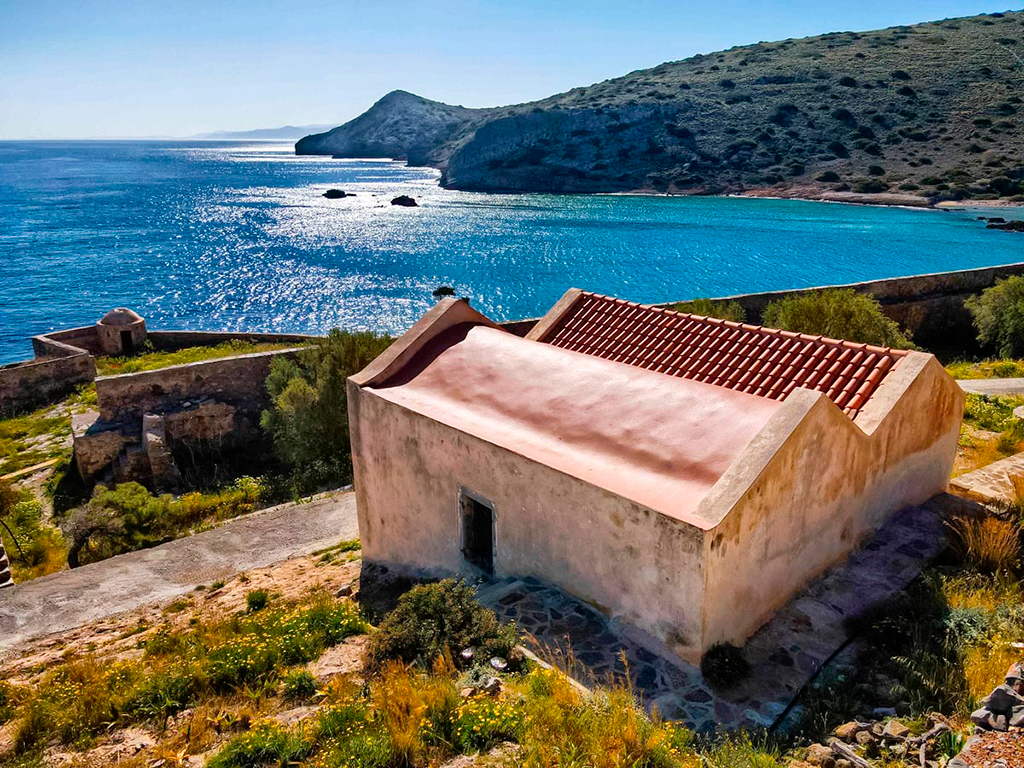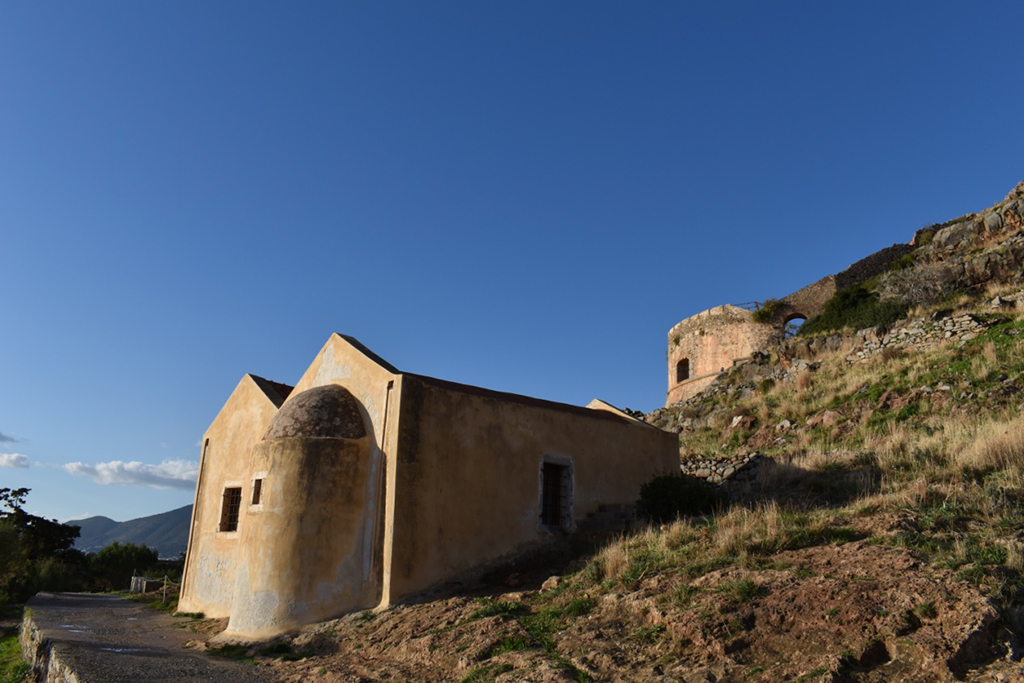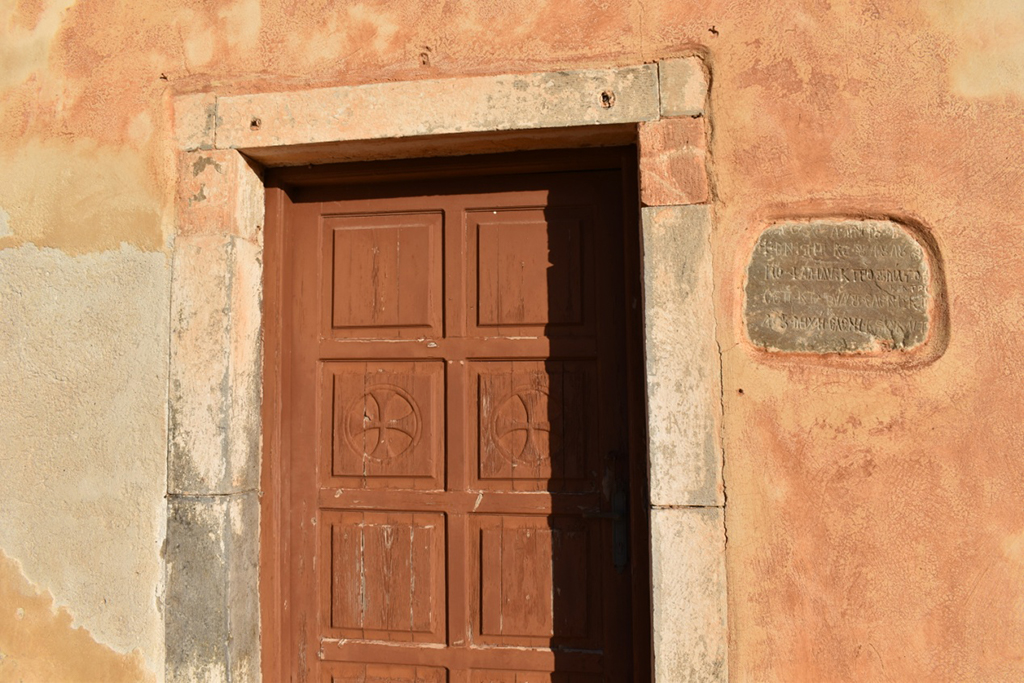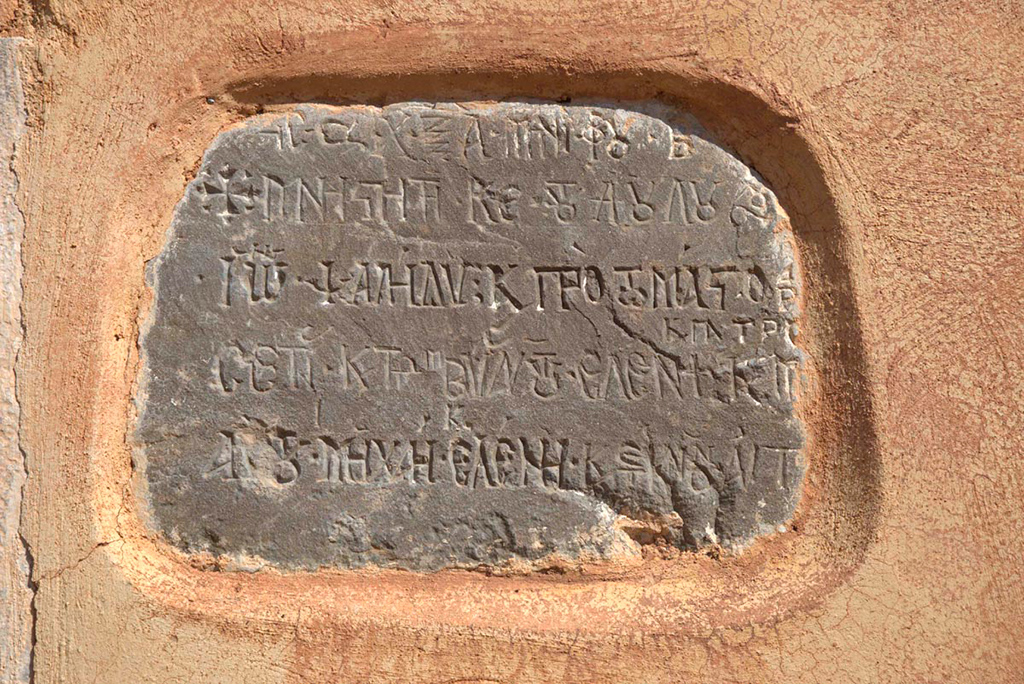Church of Saint George
The small Orthodox Church of Saint George is located on the island's eastern side and dates back to the period of the Cretan War (1645-1669). Its current state consists of two spaces, a nave and a side narthex. In a 1653 plan by the Venetian engineer Filippo Verneda, the church is depicted with two naves and two bema conchs. This element makes us assume that the second nave is destroyed and, when reconstructed, it is used as a narthex.
The dedicatory inscription, originally placed on the altar of the sanctuary and now embedded in the entrance of the church, mentions the date of February 2, 1661, as well as the name of the dedicator, Ioannis Psalidis, a master craftsman from Sitia. This date coincides with the church's inauguration.
The church is used as a residence during the Ottoman era, while during the Leper Colony period, it is renovated and dedicated to Saint George. During the restoration works of 1998-1999, rock-cut tombs of the Venetian period were discovered in its surroundings.
Transcription of the inscription:
On February 2, 1661. Remember, Lord, Your servant Ioannis Psalidis, a master craftsman from Sitia, and his wife Eleni, and his father and mother, Michail and Eleni, and their children.









